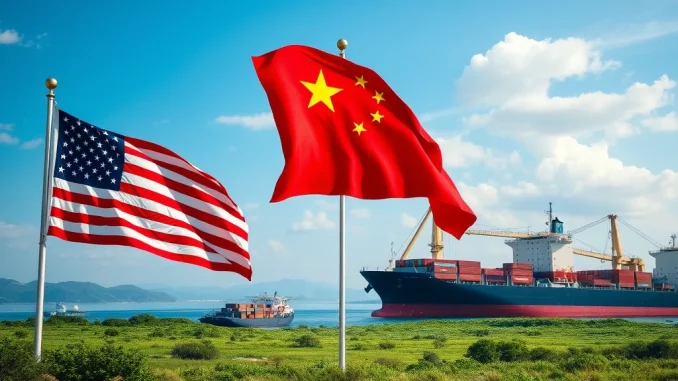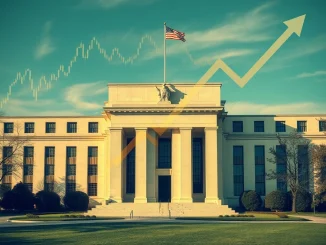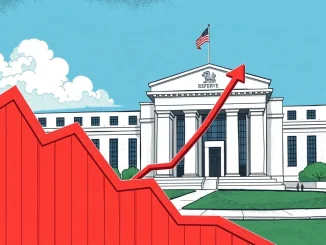
Global markets, including the dynamic world of cryptocurrencies, often react to major geopolitical and economic shifts. A key area of focus remains the trade relationship between the United States and China. Recently, significant insight into the Biden administration’s thinking on US China Tariffs emerged from a high-level source.
Decoding Scott Bessent Comments on Trade Policy
According to a report by Walter Bloomberg on X, U.S. Treasury Secretary Scott Bessent provided clarity on the administration’s stance regarding tariff levels on Chinese goods. Bessent acknowledged that recent tensions have unfortunately escalated but highlighted that the existing framework, potentially referring to elements of the previous Phase One agreement, has offered a useful structure for managing aspects of the relationship.
Understanding Current and Potential Tariff Rates
Secretary Bessent’s remarks focused on defining a potential range for future Tariff Rates. He indicated that the current tariff levels on Chinese imports are effectively a floor, meaning they represent a minimum threshold. Conversely, the rates that were in effect as of April 2 are seen as a potential ceiling, indicating the highest level the U.S. is likely to revert to if necessary.
A crucial takeaway from Bessent’s comments is the assertion that it is improbable for tariffs to decrease below the 10% mark. This suggests a firm baseline for future trade negotiations or policy adjustments. He also reinforced the U.S.’s capacity to reinstate the April 2 levels should circumstances warrant such a move.
What About the Temporary Tariff Adjustments?
The current landscape includes temporary adjustments to tariffs on goods exchanged between the two nations. These temporary changes, set for a 90-day period, involve significant reductions from previous highs:
- China’s Tariffs on U.S. Goods: Temporarily reduced from 125% down to 10%.
- U.S. Tariffs on Chinese Imports: Temporarily reduced from 145% down to 30%.
These temporary adjustments operate within the broader context of the ongoing trade discussions and the framework mentioned by Bessent. While these specific rates are temporary, Bessent’s comments on the 10% floor and the April 2 ceiling provide a longer-term perspective on the administration’s thinking regarding the baseline and maximum levels for tariffs.
Implications of This Trade War Update
This latest Trade War Update from a senior Treasury official offers valuable insight for businesses, investors, and economists tracking the U.S.-China economic relationship. Knowing the potential floor (10%) and ceiling (April 2 levels) for tariffs helps set expectations and reduces some uncertainty, although the exact trajectory will depend on future negotiations and geopolitical developments.
The fact that the U.S. maintains the option to revert to higher rates (April 2 levels) underscores the conditional nature of any current arrangements and provides leverage in ongoing or future discussions related to a comprehensive China Trade Deal or other agreements.
In Conclusion: A Clearer Picture on Tariffs
Secretary Scott Bessent’s recent remarks paint a clearer picture of the Biden administration’s likely approach to US China Tariffs. By defining a floor at 10% and identifying the April 2 rates as a potential ceiling, the U.S. Treasury is signaling a stable baseline while retaining flexibility. This information is vital for understanding the potential economic headwinds or tailwinds that could impact global markets, including the cryptocurrency space, which often mirrors broader economic sentiment. While temporary tariff reductions are in effect, Bessent’s comments provide a crucial long-term perspective on where tariff rates are anchored and the conditions under which they might change.



